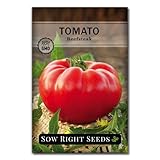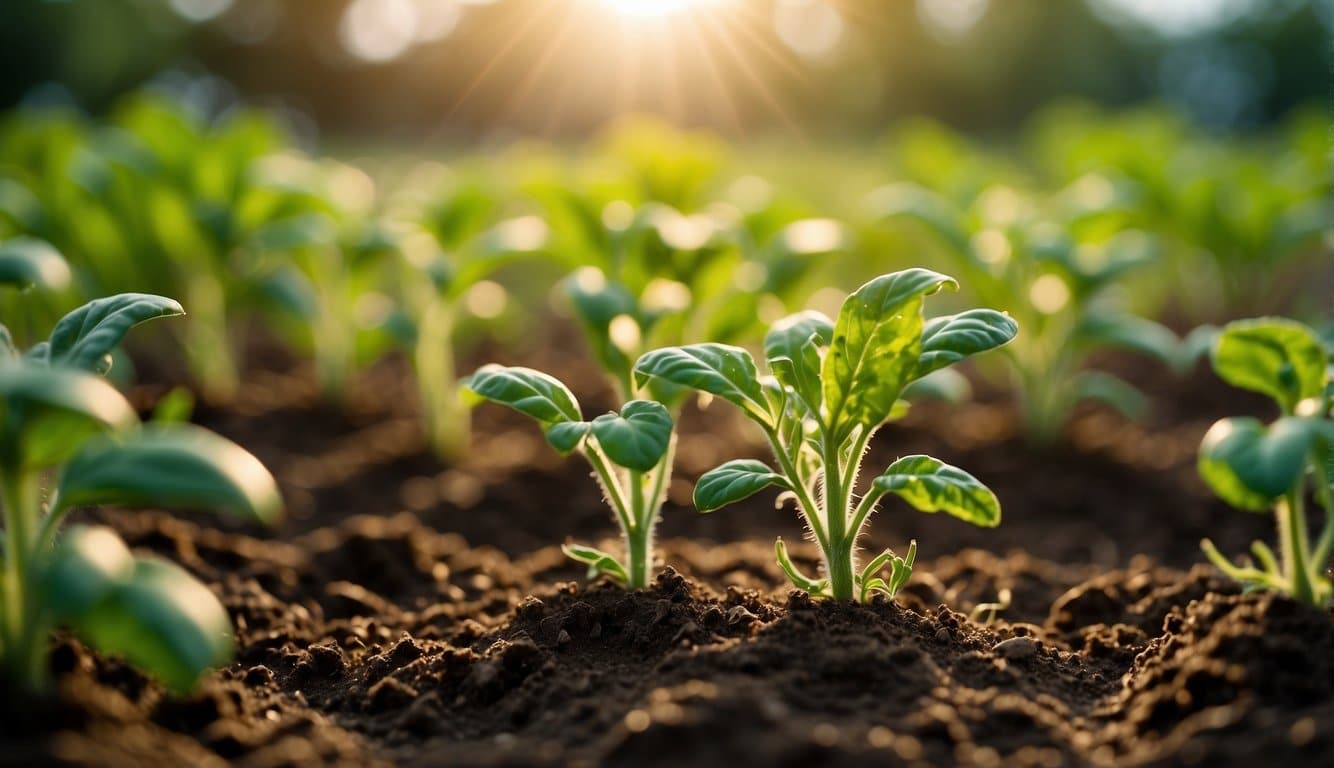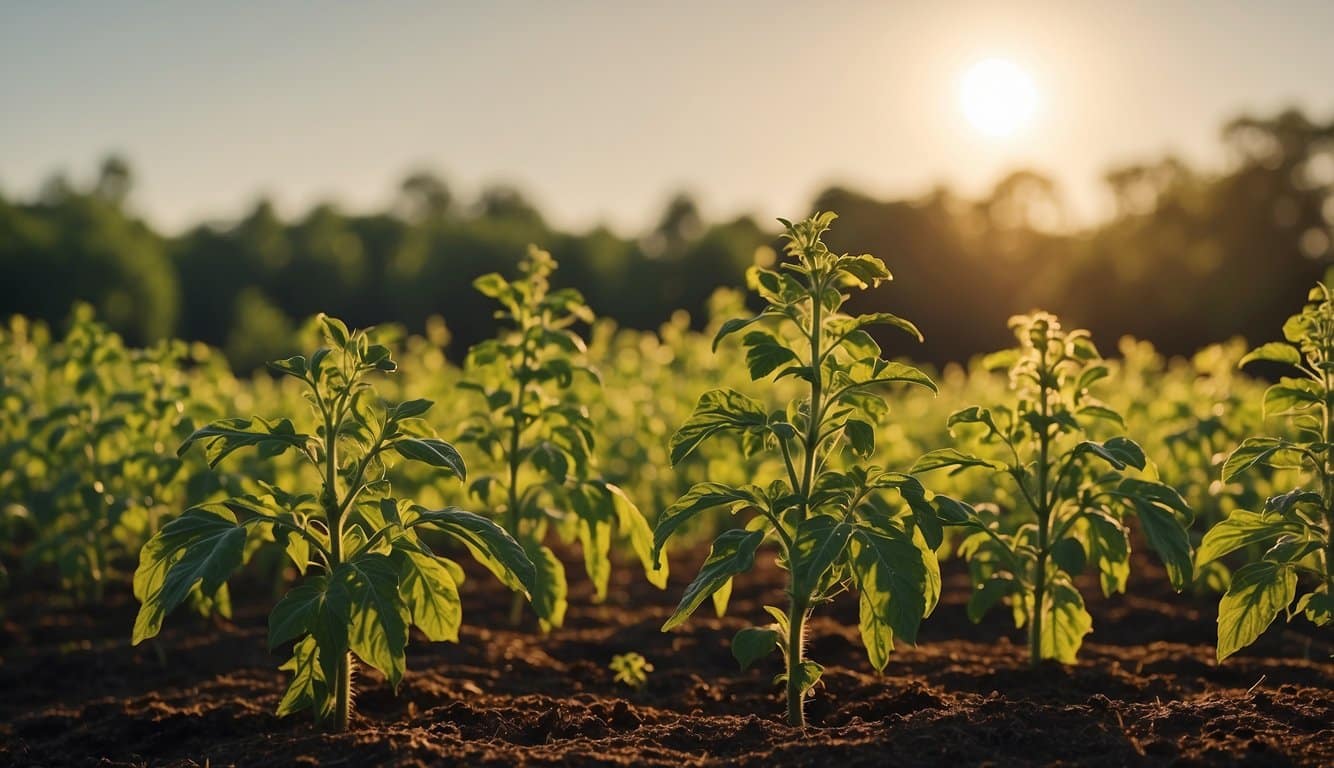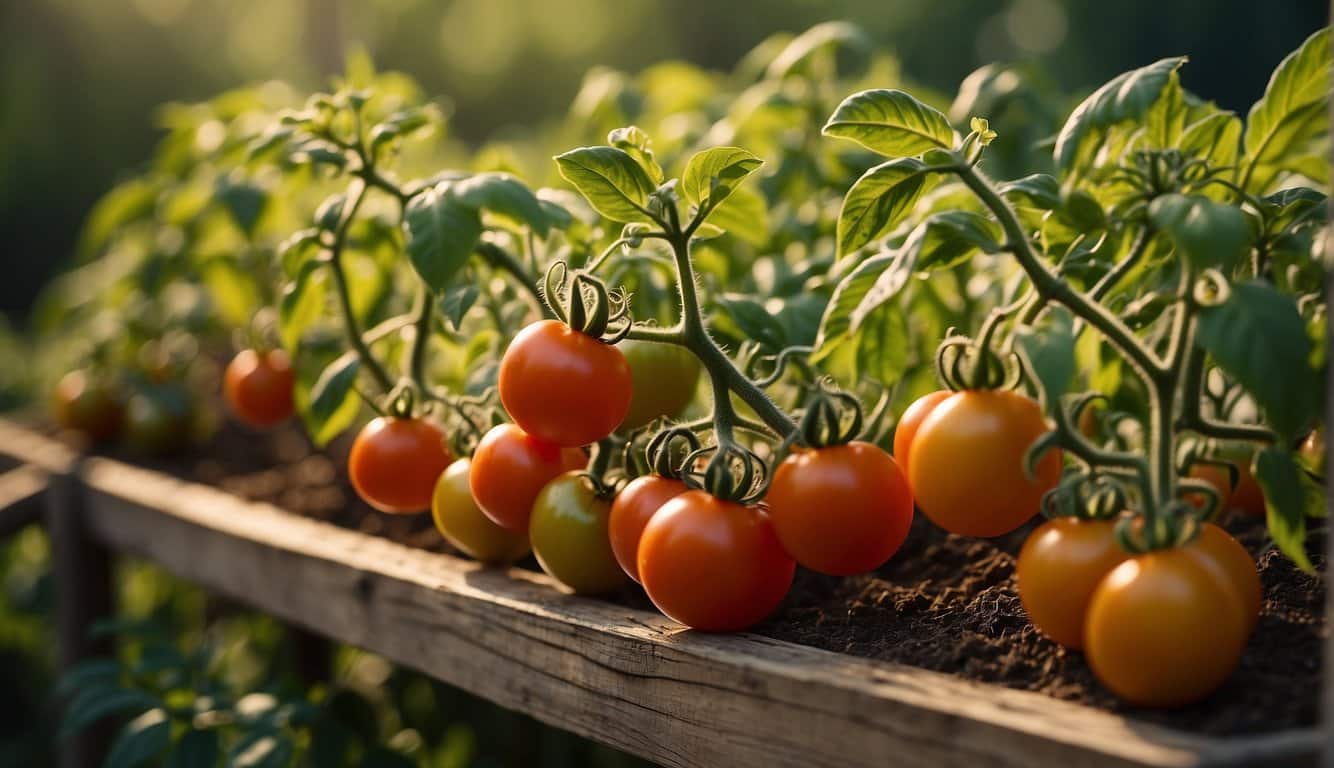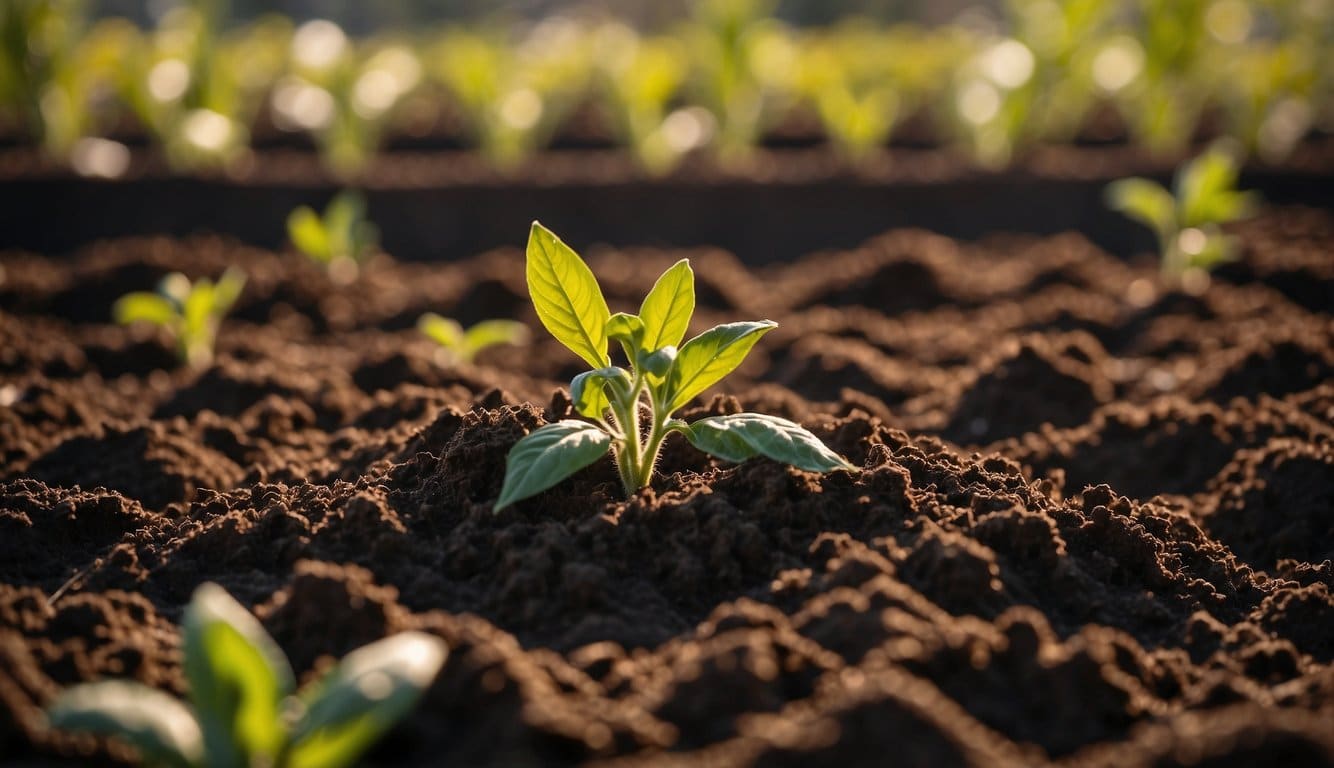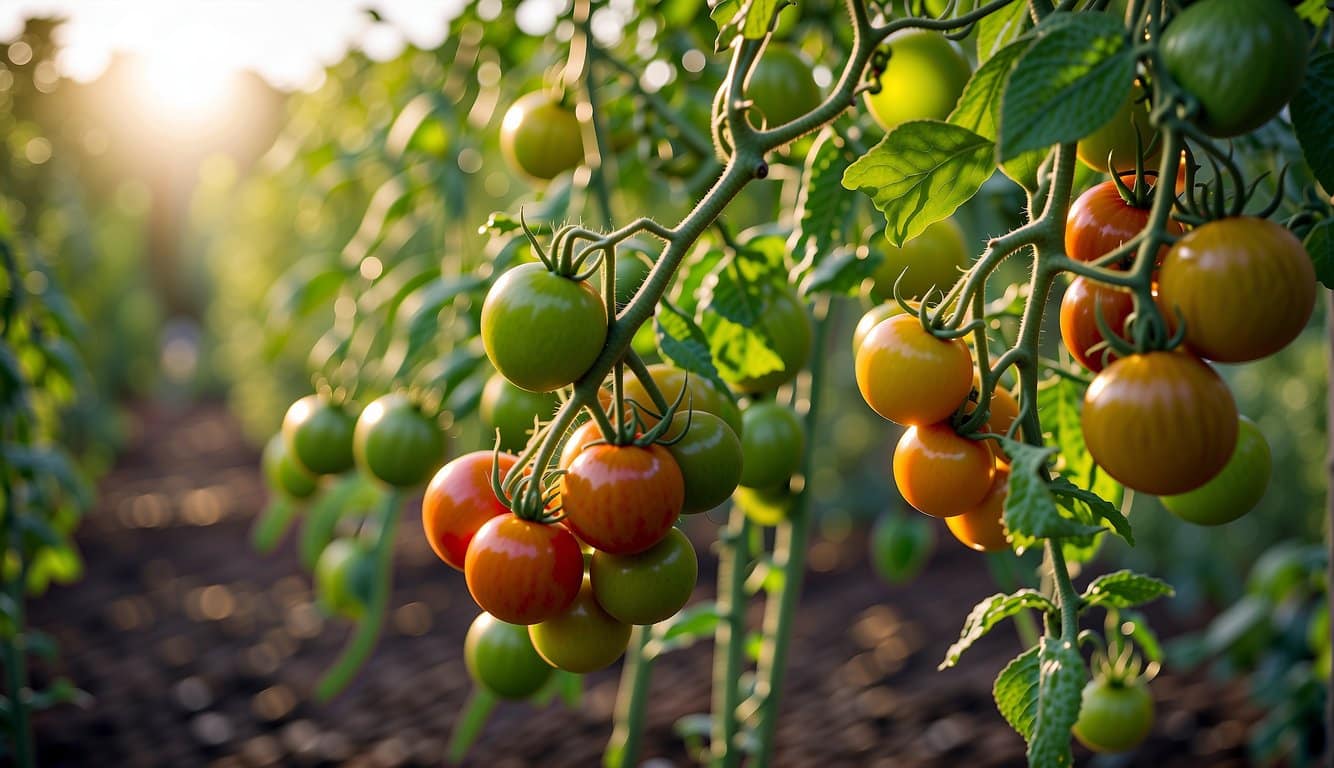| Question | What’s the best time of year to plant tomatoes in Louisiana (LA)? |
|---|---|
| Answer | Early spring, from late February to March, depending on the region. |
| More Info |
|
In Louisiana, the warm climate allows for an earlier start to the tomato planting season compared to many other states.
Gardeners can begin planting tomatoes outdoors as early as late February to early March in southern regions of the state, while those in northern Louisiana should wait until mid to late March. To extend the growing season, starting tomato seeds indoors about 6-8 weeks before the outdoor planting date is beneficial.
Additionally, considering a fall planting around August can also yield a successful harvest before the first frost of winter.
Louisiana is a state that experiences a humid subtropical climate, which is characterized by hot and humid summers and mild winters. This climate is ideal for growing a variety of crops, including tomatoes.
Key Takeaways
- Louisiana’s hot and humid climate is ideal for growing tomatoes, but careful consideration of the optimal planting times is required.
- The best time to plant tomatoes in Louisiana is during the spring months of March or April after the threat of frost has passed.
- Proper soil preparation and caring for the plants throughout the season are essential for a successful tomato harvest.
Louisiana’s Climate: 101
When it comes to planting tomatoes in Louisiana, it is essential to understand the state’s unique climate. Louisiana falls under the USDA hardiness zones 8 and 9, which means that the state experiences mild winters and hot, humid summers. This climate is ideal for growing tomatoes, as they thrive in warm weather.
Louisiana’s weather is characterized by its high humidity and frequent rainfalls. The state receives an average of 50 inches of rainfall per year, with most of the rain falling during the summer months.
This means that the soil is often moist, which is excellent for tomato growth.
However, it is important to note that Louisiana’s climate can also be unpredictable. The state is prone to hurricanes, which can cause severe damage to crops. Additionally, the high humidity can lead to fungal diseases, such as blight, which can affect tomato plants.
Therefore, it is crucial to take precautions when planting tomatoes in Louisiana. This includes selecting the right tomato varieties, preparing the soil, and spacing the plants correctly.
Optimal Planting Times for Tomatoes in Louisiana
Tomatoes are a staple in many Louisiana gardens, and for good reason. They are easy to grow and produce a bountiful harvest. However, planting tomatoes at the wrong time can lead to poor yields, or worse, no harvest at all.
In this section, we will discuss the optimal planting times for tomatoes in Louisiana to help you get the most out of your garden.
Early Planting
For those eager to get a head start on their tomato crop, early planting is an option. This involves planting tomatoes before the last frost date, which is typically in mid-February in Louisiana.
However, it is important to note that planting too early can be risky, as frost can damage or kill young tomato plants.
To mitigate this risk, gardeners can protect their plants by covering them with blankets or cloths on cold nights. Additionally, planting tomato varieties that are more tolerant to cold temperatures, such as cherry tomatoes, can increase the chances of success.
Main Season Planting
The main season for planting tomatoes in Louisiana is in early spring, after the last frost date. This is typically in late March or early April.
Planting during this time ensures that the soil is warm enough for the tomatoes to grow and that there is no risk of frost.
To get the most out of your tomato plants during the main season, it is important to choose the right variety for your garden.
Some popular varieties for Louisiana include Celebrity, Roma, and Better Boy. These varieties are known for their high yields and disease resistance.
Late Season Planting
For those who missed the main planting season or want to extend their harvest, late season planting is an option.
Late season planting involves planting tomatoes in late summer or early fall, after the hottest temperatures have passed.
However, it is important to note that late season planting comes with its own set of challenges. The shorter days and cooler temperatures can slow down the growth of the tomatoes, leading to smaller yields.
Additionally, there is an increased risk of disease and pests during this time.
To mitigate these risks, gardeners can choose varieties that are more tolerant to cooler temperatures, such as San Marzano or Black Krim.
Additionally, providing extra care, such as regular pruning and fertilization, can help ensure a successful harvest.
Soil Preparation for Tomato Planting
Before planting tomatoes in Louisiana, it is important to prepare the soil properly. The soil should be well-draining and loose, with a pH level between 6.0 and 7.0.
The ideal pH level is between 6.5 and 7.0.
To determine the pH level of the soil, a soil test can be done. If the pH level is too high (over 7.0), sulfur can be added. If the pH level is too low (below 6.0), lime can be added.
In addition to proper pH levels, adding compost to the soil is an effective way to improve the soil quality.
Compost is nutrient-packed and provides the necessary elements for tomato plants to produce healthy foliage and flavorful fruits.
When planting tomatoes, it is important to dig a hole deep enough to cover the plant, leaving only about ⅓ of the tomato plant exposed.
It is also recommended to place a stake in the soil about 2 inches away from each plant to provide support for the growing plant.
Caring for Tomatoes Throughout the Season
Watering and Mulching
Tomatoes require regular watering to grow healthy and produce a bountiful harvest. In Louisiana, the best time to water tomatoes is early in the morning or late in the afternoon.
This helps to prevent the leaves from getting burnt by the sun. The soil should be kept moist but not waterlogged.
Overwatering can lead to root rot, which can be detrimental to the plant’s health.
Mulching is another important aspect of tomato care.
It helps to retain moisture and regulate soil temperature. A layer of organic mulch such as straw or leaves can be added around the base of the plant.
This also helps to suppress weed growth and prevent soil erosion.
Pest and Disease Management
Tomatoes are susceptible to a variety of pests and diseases. Common pests include aphids, whiteflies, and tomato hornworms.
These can be controlled using organic methods such as handpicking, using insecticidal soap, or introducing beneficial insects such as ladybugs.
Diseases such as early blight, late blight, and blossom end rot can also affect tomato plants.
These can be prevented by practicing good hygiene, such as removing infected plant debris and avoiding overhead watering. Fungicides can also be used as a preventative measure.
Harvesting and Storage
The best time to harvest tomatoes in Louisiana is when they are fully ripe and have a deep, rich color. They should be firm yet slightly soft to the touch.
It’s important to harvest regularly to promote continued fruit production.
After harvesting, tomatoes should be stored at room temperature away from direct sunlight. They can also be stored in the refrigerator, but this can affect their flavor and texture.
Tomatoes can be canned, frozen, or dried for long-term storage.
Frequently Asked Questions
What is the optimal planting season for tomatoes in Louisiana’s climate?
The optimal planting season for tomatoes in Louisiana’s climate is during the spring months of March or April, after the threat of frost has passed.
Tomatoes require warm soil and air temperatures to grow, and planting too early can stunt their growth. Planting in the spring allows for optimal conditions for germination and early growth.
How does Louisiana’s planting zone affect tomato planting schedules?
Louisiana’s planting zone affects tomato planting schedules by dictating the types of tomatoes that can be grown and when they should be planted.
Louisiana is divided into three planting zones, with the southern part of the state being in zone 9a, the central part in zone 8b, and the northern part in zone 7b.
The planting zones determine the types of tomatoes that can be grown, with heat-tolerant varieties being best for the hot and humid climate of Louisiana.
What are the recommended tomato varieties for Louisiana’s hot and humid weather?
The recommended tomato varieties for Louisiana’s hot and humid weather are heat-tolerant varieties such as Celebrity, Sunmaster, and Heatwave II.
These varieties are resistant to diseases and pests that are common in Louisiana and can withstand the high temperatures and humidity.
When is the last advisable date to plant tomatoes in Louisiana?
The last advisable date to plant tomatoes in Louisiana is around mid-May. Planting after this date can result in the tomatoes not having enough time to mature before the heat of summer sets in.
How do LSU AgCenter guidelines influence tomato planting in Louisiana?
LSU AgCenter guidelines influence tomato planting in Louisiana by providing recommendations for soil preparation, fertilization, and pest management.
The LSU AgCenter recommends preparing the soil by adding organic matter and adjusting the pH level to between 6.0 and 7.0.
They also recommend using a balanced fertilizer and practicing crop rotation to prevent disease.
Following these guidelines can help ensure a successful tomato harvest.
What cultural practices should be considered when planting tomatoes in Louisiana?
When planting tomatoes in Louisiana, cultural practices such as proper spacing, trellising, and pruning should be considered.
Tomatoes should be spaced about 2 to 3 feet apart to allow for good air circulation, which can help prevent disease.
Trellising and pruning can help keep the plants upright and increase airflow.
It is also important to water the plants regularly and mulch around them to help retain moisture in the soil.
Last update on 2025-04-18 / Affiliate links / Images from Amazon Product Advertising API
